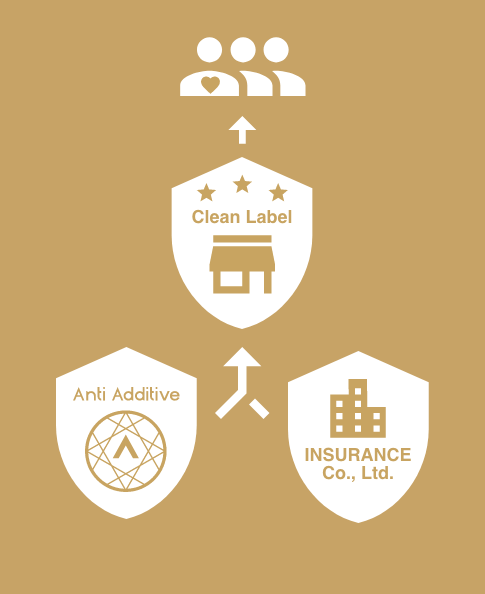OBJECTIF DE LA CERTIFICATION A.A.
Since the 19th century, many different food additives have been developed to satisfy the needs for food production with the increasing use of processed foods in the food sector. So, the use of such additives has become more popular. International organizations such as the WHO and the Food and Agriculture Organization of the United Nations (FAO), as well as the Food and Drug Administration in each country, have imposed strict regulations on food additives, and carefully assessed the risks of food additives to human health. The Codex Alimentarius Commission has also developed food labeling standards and guidelines that have been implemented in most countries, so that food manufacturers have an obligation to indicate which additives are contained in their products. For example, in the European Union, " E-numbers" are codes for substances used as food additives; people who are allergic or sensitive to certain food additives should check the labels carefully.
The Anti-Additive Clean Label Organization promotes and encourages the food and beverage industry not to use food additives in the restaurant and product manufacturing process. The organization has been certified by the European Union and is allowed to promote Restaurant and Food Anti-additive Certification, Sugar Certification and Anti-additive Certification of Pet Food from an impartial third-party status. We invite experts and scholars in this field to serve as advisors and uphold the interest recusal principle to conduct certification assessments externally. WithRestaurant and Food Anti-additive Certification, Sugar Certification and Anti-additive Certification of Pet Food, we hope to effectively reduce the use of food additives, and together with the following verification principles, to eliminate unnecessary additional additives, so that consumers have more quality food choices to protect health and consumer rights.
In addition, cleaning products used in daily life have been getting more and more attention in all countries and regions in recent years. It is an important social issue for consumers to be able to clearly identify the content and materials in all kinds of products; it is also important for upstream and downstream manufacturers to be able to maintain the production standards more effectively as well as to be able to show significant differences in distribution channels.
We welcome all manufacturers who also support the concept of no (fewer) additives and the cleanliness of their products to join the A.A. certification to promote sustainability!
LE PROCESSUS DE CERTIFICATION
Submit the Application
1 |
Confirm the products for certification Confirm the certification items Understand the certification norms Pay the application fee |
Submit the Documents
2 |
Confirm by the person in charge Confirm the application Verify the application documents Approve the certification items |
Conduct Substantive Examination
3 |
Submit all required documents Review the contents of the document Conduct substantive examination of production Re-exam the certification |
Certification completed
4 |
European Union issues the certificate Manufacturer obtains various authorizations Conduct random inspections after certification Promote the no-additive concept together |
POURQUOI DEVRAIS-JE M'INSCRIRE À LA CERTIFICATION A.A. ?

|
ASSISTANCE A L'EXPORTATIONFournir des ressources d'accès à l'étranger |

|
COMITÉ D'ENTRAIDEComité d’entraide aux entreprisesAider à promouvoir la marque et les achats groupés |

|
MARKETING MULTI-CANALe-commerce / canal physiqueCanaux diversifiés exposés |

|
RESSOURCES SUR LES PRIX DU GOÛT A.A.Ressources importantes sur les prix internationauxFaire briller votre marque |

|
ALLIANCE INTERPROFESSIONNELLEAlliance renforcée 1 + 1 > 2Créer de nouvelles opportunités commerciales |

|
PROGRAMME SPÉCIAL A.A.Assurance produit / Inspection SGSOffre exclusive de l’Association A.A. |
Comply with SDGS core objectives to achieve sustainable development and social benefits
According to the United Nations' 2030 Sustainable Development Goals (SDGs), the SDGs contain 17 goals, 169 targets and 230 indicators to help the world work together towards sustainability. A.A. is committed to complying with the SDGs values, particularly in terms of zero hunger, good health and well-being, clean water and sanitation, responsible consumption and production, climate action, life below water, life on land, and diversified partnerships - all types of sustainable development are the goals and social benefits that A.A. aims to achieve.
The fairness of third-party certification
Third party certification in all kinds of business activities must be open, fair and equitable in order to be effective. The third party must have absolute authority and prestige, and must be independent of the first party and the second party, and must have no financial interest or equal interest with the first party and the second party, or have the obligation and responsibility to protect the rights and interests for both parties, in order to gain the full trust from both parties. Furthermore, the third party has a social responsibility to enhance mutual trust between producers and consumers, between governments and producers, and between governments and consumers.
Whether or not a product has been certified in international trade activities is crucial if it is to be recognized in the market. Therefore, the quality of certification is the key to maintaining the credibility of the certification system. Through an impartial third-party certification system, a certification agency that has been qualified to meet all international standards will perform document review, on-site audits, and sampling inspections to certify those who meet the certification standards and continue to confirm conformity by means of follow-up inspections and random checks on commercially available products. The name of the certification agency, product name, traceability code, and the method to disclose the information should be marked in order to help consumers identify and inquire; thus, environmental sustainability can be achieved after the certification mechanism is in place.
Upgrade the goodwill and brand image
Our experts in the related fields will advise and adjust the current production process to meet the certification standards. After the standard is met, the certification label authorized by A.A. will be issued to the manufacturer, allowing consumers to identify the anti-additive products. Of course, the manufacturer will undoubtedly be more recognizable to consumers, and the product's market differentiation and brand image will be upgraded accordingly.
Win-win marketing campaign
A.A. organizations in all countries have been working hard to organize all kinds of activities to promote anti-additive products and concepts, greatly increase the exposure for manufacturers, establish a good interaction with consumers, and further improve the operating profit for all kinds of product manufacturers.
Interdisciplinary Communication
A.A. uses all kinds of platforms to share and exchange practical information on industry changes and the production technology development in each country so that each member of the A.A. organization can get the latest industry news instantly.
The exchange between the different industries makes it possible to further enhance innovation in each field.
Access to the latest information on the anti-additive process around the world
Every A.A. organization actively organizes domestic and international industry conferences, seminars, educational training or promotional activities. The members who join the advisory program can receive relevant subsidies and benefits, and obtain the latest production technology information.
Immediately access to international and local laws and regulations
In addition to providing advice to manufacturers on the latest regulations in each country, the Organization also acts as a bridge between governments and manufacturers from all over the world so that they can receive real-time information on the laws and regulations around the world. Whether it is in international trade or access to different markets, it can play an effective and immediate role and therefore leads to a positive interaction between manufacturers and governments.
COMMENT FONCTIONNE LE PROCESSUS DE CERTIFICATION ?
Veuillez nous contacter par courriel ou par téléphone.
2. Les équipes A.A. vous contacteront rapidement. Nous vous proposerons un programme d'accompagnement après des visites chez les fournisseurs.
3. Sous la supervision d'experts professionnels, nous demandons à tous les restaurants d'ajuster progressivement le processus de production pour obtenir la certification A.A.
THE PROCESS OF CERTIFICATION
1
2.Submit the Documents
3.The review is completed within 15 days after receiving the application materials
1-1 New Applicants Head to 2
1-2 Previous Applicants Head to 4
2
3
4
5
6
4-2-1 May re-apply after one year since the date of disqualification.
7
- Documents required to apply for A.A. certification and guidance -
|
|
|
|
|
|
|
|
VOUS SOUHAITEZ DEVENIR MEMBRE ?
NOUS CONTACTER
CERTIFICATION PRINCIPALS
Do not change the taste of the ingredients with food additives. In relatively reasonable circumstances, the exclusion of toxic or additives which may cause chronic harm and disease to the human body.
Do not shorten the production time or process with food additives. Take chicken soup as an example, according to the traditional process, to be boiled chicken several hours into a chicken soup, do not use fast and convenient chicken soup powder (block) and other ways to replace. Meals from raw materials → food → shop are following the traditional original process by step by step production.
Do not over-prolong the shelf life with food additives.
The ingredients on the menu are not factory-made products, and they should be handled and prepared in the restaurant.
The personnel, operation sites, sanitation management of facilities and quality assurance system shall meet the regulations on good hygiene practice for foods.
The products and processes have no or minimal impact on the human body, or are the least burdensome.
They are friendly to animals, plants and the environment.
The manufacturing process does not generate excessive waste in resources and has no impact on the environment.
Comply with the international standards or criteria based on the Clean Development Mechanism (CDM) (e.g. DIN, SGS, and others) to ensure the transparency, comparability and credibility of the reports.
The certification will examine whether it is in line with the SDGs.
Note: Issues related to the traceability of ingredients, such as whether the ingredients are organic, the ingredients' origin, are not included in the scope of A.A. certification.
LES PRODUITS ALIMENTAIRES NE CONTIENNENT PAS :
Anti-Additive Clean Label Organization in accordance with the local government’s Food Safety and Hygiene Management Law, divides the common additives into the following thirteen categories:
Flavor enhancers: synthetic or refined condiments that increase the flavor of food, such as monosodium glutamate, chicken powder, stock cubes, etc...
Bleach: including hydrogen peroxide (hydrogen peroxide), sulfites, benzyl peroxide, etc...
Phosphates: including potassium dihydrogen phosphate (calcium), potassium metaphosphate (sodium), potassium pyrophosphate (sodium), potassium polyphosphate (sodium), etc…
Quality improvement agents and other 6 categories: including color retaining agents, expanding agents, thickeners, chemicals for the food industry, emulsifiers and others.
Coloring: Contains food coloring, titanium dioxide, caramel coloring, etc...
Flavor: Contains all artificial flavors.
Preservatives: Contains hexadienoic acid, benzoic acid, deacidified acetic acid, calcium propionate, etc...
Artificial antioxidants: including dibutylhydroxytoluene (BHT), butylhydroxymethoxybenzene (BHA), tertiary butylhydroquinone (TBHO), etc…
Note-Sweeteners: food additives that impart sweetness to food or feed, such as sugar substitutes and sugar substitutes are low-calorie sweeteners, which are often added to foods that need to reduce calories. Except for those who lose weight who pay attention to calories, It also brings great convenience to diabetic patients. And sucrose, beet sugar, honey, etc. are regarded as food raw materials.
EU LICENSE OF VERIFICATION CATEGORY SERVICES
ANTI-ADDITIVE CLEAN LABEL ORGANIZATION is approved by the European Union to perform certification services, supervised by EUIPO to carry out inspections that comply with the E number.
Certification standards and advisory fees:
FRAIS DE COACHING POUR LA VÉRIFICATION
Les conditions de base pour les niveaux d’évaluation de vérification et les principes de vérification anti-additifs sont les suivants :
ÉTIQUETAGE CLAIR A.A. - CERTIFIÉ UNE ÉTOILE : Parmi les treize additifs alimentaires couramment utilisés, on ne trouve aucun exhausteur de goût, ni agent de blanchiment, ni phosphate.
ÉTIQUETAGE CLAIR A.A. - CERTIFIÉ DEUX ÉTOILES : Parmi les treize additifs alimentaires couramment utilisés, il n'y a pas d'exhausteurs de goût, d'agents de blanchiment, de phosphates, d'améliorants de qualité et six autres catégories, de colorants artificiels et d'arômes artificiels.
ÉTIQUETAGE CLAIR A.A. - CERTIFIÉ TROIS ÉTOILES : Parmi les treize additifs alimentaires couramment utilisés, il n'y a pas d'exhausteurs de goût, d'agents de blanchiment, de phosphates, d'améliorants de qualité et six autres catégories, de colorants artificiels, d'arômes artificiels, de conservateurs et d'antioxydants artificiels.
ÉTIQUETAGE CLAIR A.A. - 100% SANS ADDITIFS : Aucun additif alimentaire listé dans les « norme pour la spécification, la portée, l'application et la limitation des additifs alimentaires » n'est utilisé.
Les AA MEMBRE CLEAN LABEL : Reconnaître le principe anti-additif et est prêt à travailler ensemble pour promouvoir l'anti-additif ou à recevoir les AA.' avis de travailler à la certification anti-additif.
CERTIFICATION DE LA TENEUR EN SUCRE
La Certification de la teneur en sucre certifie la teneur en sucre du produit alimentaire, classée en trois catégories :
ÉTIQUETAGE CLAIR A.A. - SANS SUCRE : Sans sucre, sans édulcorants artificiels ou autres substituts de sucre, sans sirop ou sucres ajoutés naturellement.
ÉTIQUETAGE CLAIR A.A. - FAIBLE EN SUCRE : Peut contenir un édulcorant artificiel, un édulcorant de substitution, des sirops ou d'autres sucres naturels ajoutés.
ÉTIQUETAGE CLAIR A.A. - VRAI SUCRE : ne contient que du sucre naturel.
Pet food certification
ÉTIQUETAGE CLAIR A.A. - CERTIFIÉ UNE ÉTOILE : Parmi les treize additifs alimentaires couramment utilisés, on ne trouve aucun exhausteur de goût, ni agent de blanchiment, ni phosphate.
ÉTIQUETAGE CLAIR A.A. - CERTIFIÉ DEUX ÉTOILES : Parmi les treize additifs alimentaires couramment utilisés, il n'y a pas d'exhausteurs de goût, d'agents de blanchiment, de phosphates, d'améliorants de qualité et six autres catégories, de colorants artificiels et d'arômes artificiels.
ÉTIQUETAGE CLAIR A.A. - CERTIFIÉ TROIS ÉTOILES : Parmi les treize additifs alimentaires couramment utilisés, il n'y a pas d'exhausteurs de goût, d'agents de blanchiment, de phosphates, d'améliorants de qualité et six autres catégories, de colorants artificiels, d'arômes artificiels, de conservateurs et d'antioxydants artificiels.
ÉTIQUETAGE CLAIR A.A. - 100% SANS ADDITIFS : Aucun additif alimentaire listé dans les « norme pour la spécification, la portée, l'application et la limitation des additifs alimentaires » n'est utilisé.
Les AA MEMBRE CLEAN LABEL : Reconnaître le principe anti-additif et est prêt à travailler ensemble pour promouvoir l'anti-additif ou à recevoir les AA.' avis de travailler à la certification anti-additif.
Daily necessities certification
FMCG regulations are established by governments and international organizations to protect public health and the environment, and to ensure consumers can make informed choices when purchasing products. FMCG regulations often set restrictions or prohibit the use of these additives. For example, the European Union's list of toxic substances lists many chemicals considered as toxic substances. In addition, the EU also has many other regulations and guidelines to regulate the use of surfactants and organic solvents, such as the Cosmetics Directive and the Toxic Substances Control Act. The following commonly used additives in consumer goods may have negative impacts on human body or environment.
Silicones : commonly used in hair care products such as conditioners and gels to improve hair texture and protect hair strands, but may also cause skin irritation or sensitivities, or affect hair texture.
Phosphates : commonly found in cleaning products, but may also cause skin irritation or sensitivities, or affect pollution of the environment.
Surfactants : commonly used in cleaning products and cosmetics, but may also cause skin irritation or sensitivities, or affect pollution of the environment.
Organic Solvents : commonly used in cleaning products, but may also be harmful to the environment and may potentially pose risks to humans.
There is an increasing awareness among consumers about ensuring their own health and the safety of the environment. As a result, they tend to choose products that do not contain potentially harmful substances to humans or the environment.
Our organization assists in evaluating the direct and indirect effects on human body from the additives used in consumer goods and long-term and chronic neglect in related aspects of daily life, in order to determine the risks associated with using products for consumer goods and human body.
Please contact your local A.A. office for additional information on the certification procedures.
Cosmetics certification
The Cosmetics Regulation (E.C.) No 1223/2009 is the main regulatory framework for the finished cosmetic products launched in the E.U. market. This legislation affects the manufacturers and importers of cosmetics and the suppliers of cosmetic ingredients. In addition, the regulation prohibits the final formulas, ingredients or ingredient compositions and/or finished cosmetic products that have undergone animal testing from placing on the E.U. market. This certification is based on E.U. standards and checks the certified products in each country.
Refer to The Official Cosmetic Ingredient Database in EU list of banned/restricted cosmetic ingredients in EU:
Banned (Annex II)
Restricted (Annex III)
Colorants (Annex IV)
Preservatives (Annex V)
UV filters (Annex VI)
Comply with Animal Testing Ban - Testing ban and Marketing ban
We help evaluate the product safety for cosmetic manufacturers prior to placing their products on the market to provide evidence that the conditions of use are considered reasonable and foreseeable for human health in their intended use.
Please contact your local A.A. office for additional information on the certification procedures.
Residue certification
In current agricultural practice, raising animals for food relies heavily on the use of compounds with pharmacological activity: drugs. The use of drugs in food-producing animals is essential to the health and well-being of these animals and is fundamental to the industrial economy.
There are five major classes of drugs used in food animals:
Topical antiseptics, bactericides, and fungicides used to treat surface skin or hoof infections, cuts, and abrasions.
Ionophores, which alter rumen microorganisms to provide more favorable and efficient energy substrates from the bacterial conversion of feed and impart some degree of protection against some parasites.
Steroid anabolic growth promoters (whose mechanism of action resides in the interaction of estrogen-, progesterone-, or testosterone-like compounds with specific classes of hormone receptors in animal cells) and peptide production enhancers (recombinant bovine somatotropin for increased milk production in dairy cows).
Anti-parasite drugs.
Antibiotics as used to control overt and occult diseases and to promote growth.
Other U.N. and E.U. standards for limitation
The Organization assists in evaluating the use of drugs in food animal production, the practices used to administer these drugs to animals, and the processes used for drug therapy to determine the risks associated with the use of drugs in food animals.
Please contact your local A.A. office for additional information on the certification procedures.
HARMLESS MATERIAL
SVHCs (Substances of Very High Concern) are substances listed on Annexes of the European Union's REACH Regulation which have potential adverse effects and serious consequences in certain circumstances, with irreversible impacts. Materials in the long-term micro-direct and indirect impacts on the human body, long-term and chronic neglect, there are many unknown and unpredictable unknowns.
Human beings have highly industrialized and commercialized in the process of scientific and medical progress, making the material leaching detection more accurate. For materials used in industry and products in long-term micro-direct and indirect impacts on the human body, long-term and chronic neglect, establish health standards to reduce chronic impacts.
For materials used in daily life, the main concerns about SVHCs in the EU REACH Regulation on the potential adverse effects on human health are five:
Toxicity or other adverse effects: Certain SVHCs may be toxic, causing damage or other adverse effects to human organs (such as kidneys and liver).
Reproductive toxicity: Certain SVHCs may have reproductive toxicity, causing damage to the reproductive system or fertility.
Carcinogenicity: Certain SVHCs may be carcinogenic, increasing the risk of cancer in humans.
Biodegradability: Certain SVHCs may be biodegradable, causing damage to the environment.
Other adverse effects: In addition to the above effects, certain SVHCs may also have other adverse effects, such as damage to the immune system or effects on the nervous system.
This organization assists in the assessment of materials used in the production of objects of daily life, for direct and indirect impacts on human health in various aspects, long-term and chronic neglect, in order to determine the risks associated with the use of materials in products used in daily life.
Please contact your local A.A. office for additional information on the certification procedures.
ESG
ESG (Environmental, Social, Governance) is a standard used to measure the sustainability and social impact of a company or organization in terms of environment, society and governance. It considers a company's environmental, social and governance performance, including environmental management, treatment of employees and customers, corporate responsibility and ethical practices, among others. Many investors, consumers and other stakeholders use ESG criteria to assess a company or organization's long-term sustainability and social responsibility. To demonstrate their commitment to sustainability and social responsibility, many companies now publish information about their ESG performance and practices.
There are various approaches to measuring and reporting ESG performance, depending on the specific goals and priorities of a company or organization. Below are some common approaches to measuring and reporting ESG performance:
Standardized reporting frameworks: There are a number of standardized reporting frameworks available for companies to report on their ESG performance, including the Global Reporting Initiative (GRI), the Sustainability Accounting Standards Board (SASB) and the Task Force on Climate-Related Financial Disclosures (TCFD). These frameworks Provides guidance for companies to report on specific ESG measures and can be used to compare the performance of different companies.
Environmental, Social and Governance Ratings: Various organizations such as MSCI, S&P Global and FTSE Russell provide ratings and rankings that assess companies' ESG performance. Investors can use these ratings to make informed investment decisions.
Custom Reporting: Some companies may choose to develop their own custom ESG reporting frameworks or metrics to reflect their specific goals and priorities. These reports can be used internally to track business performance or shared with stakeholders.
Third-party verification: Companies can choose to have their ESG performance independently verified by a third party, such as a certification body or a sustainability consultancy. This provides assurance to stakeholders that a company's ESG performance is being accurately reported. Verification can be done through a variety of methods, such as on-site assessments, document reviews, or interviews with company representatives.
The organization has developed a practical approach based on years of guiding certification products and auditors setting non-add-on certifications, which can be used to strengthen a company's ESG assessment business and make it more timely. Use the framework of the above four methods of third parties to measure the company's ESG performance and evaluate the company's ESG certification from a pragmatic perspective.
Through the accumulation of many years of practical experience, the agency has rich experience in additive-free certification, and has achieved successful results in certification product guidance and auditor setting. We translate these practical lessons by helping companies to be more practical in their ESG assessments. Using the above four methods as a framework, measure corporate ESG performance from a practical perspective and evaluate corporate ESG certification.
Please contact your local A.A. office for additional information on the certification procedures.
TOTALLY TRUE
TOTALLY TRUE means that the entire process of the enterprise is transparent, and the enterprise adheres to the principle of transparency in all aspects of the process from product production to consumers. The company attaches great importance to hard work and product responsibility, which is the basis for the company's gradual accumulation of trust. Businesses are committed to transparently revealing the truth and avoiding any lies to protect the rights of consumers while preserving the trust that companies have worked so hard to build over the years.
TOTALLY TRUE, is transparent in the entire enterprise process, and the third party evaluates the transparency of the entire company process in accordance with relevant European standards, including product production quality, registration information disclosure, marketing truthfulness, channel responsibility, after-sales service and dispute warranty. Through the evaluation of these standards, the confidence accumulated in the business operation can be ensured, and the rights and interests of consumers can be further protected.
For example, some products claim in the media that they are the best-selling products, the most efficient products, or the most authoritative products in a single field. We all need to go through the AA TOTALLY TRUE mechanism to verify whether it is really what he said. Indeed, these are the mechanisms that AA TOTALLY TRUE assists other third parties in various fields to ensure that product descriptions are completely true.
In terms of product production quality, evaluate whether the enterprise meets the standard additives and other requirements in the production process.
In terms of registration and disclosure, evaluate whether the company accurately labels product information as required.
In terms of authentic marketing, evaluate whether the company guarantees that the credit guarantee it provides is authentic and credible.
In terms of industry responsibility, evaluate whether the enterprise has undertaken social responsibility in terms of carbon emission reduction.
In terms of after-sales service, evaluate whether the company can quickly respond to consumers' questions about the product.
In terms of dispute warranty, after confirming the consumer's dispute on the product, evaluate whether the company can provide an appropriate warranty.
Through a comprehensive assessment of the transparency of the entire enterprise process, the organization helps companies ensure the trust they have accumulated in their operations and further protect the rights and interests of consumers. The whole process of enterprise standards is transparently inspected and verified.
Please contact your local A.A. office for additional information on the certification procedures.
Note: EU related standards
Construction Quality: EU Construction Quality Guidelines (CQI-9)
Registration Disclosure: EU Consumer Quality Legislation (CE Marking)
Abusive Marketing: The Unfair Business Practices Directive
Channel Responsibility: EU Social Responsibility Law for Carbon Emission Reduction (Corporate Social Responsibility Directive)
After sales service: EU consumer quality legislation (CE marking)
Guarantees in case of disputes: European Consumer Protection Legislation (Directive on Unfair Commercial Practices)
The above-mentioned EU standards can help enterprises comply with relevant requirements in terms of product production quality, registration disclosure, false marketing, channel responsibility, after-sales service and dispute protection, guarantee product quality and service level, and protect consumer rights. and interests at the same time.
In terms of product production quality, the EU Manufacturing Quality Guidelines (IQC-9) stipulates the basic principles and control requirements that must be followed in the manufacturing process to ensure quality and consistency. The product. In terms of registration and disclosure, the European Consumer Quality Law (CE Marking) requires companies to mark their products to ensure that consumers can understand the basic characteristics and safety of products. In terms of misleading marketing, the EU Consumer Law (Unfair Commercial Practices Directive) prohibits businesses from using false or misleading marketing to protect consumers.
Halal plus certification
A Halal certified product is a product certified to be in compliance with a series of manufacturing standards specified according to the Islamic Law or ‘Shariah’. These standards regulate all the related aspects of the products, including its ingredients, feeds and slaughtering of animal-based material, manufacturing process, hygiene and safety requirements, packaging, labeling, and transportation, etc.
According to Halal' s higher cleanliness and hygiene assessment on products and raw materials, more strict cleanliness standards are set:
Natural ingredients: no artificial fragrances, colors and preservatives or synthetic additives.
Simple: Fewer chemicals and recognizable ingredients that don't sound chemical or artificial.
Transparency: Information about the raw material sources and product manufacturing processes.
Minimal processing: Processing using techniques that consumers do not recognize as manual.
According to the aforesaid specifications for food additives, the Organization verifies that the products meet the halal standards and cleanliness requirements.
Please contact your local A.A. office for additional information on the certification procedures.
Restaurant | Produit La certification anti-additifs
Frais de 100% sans additif
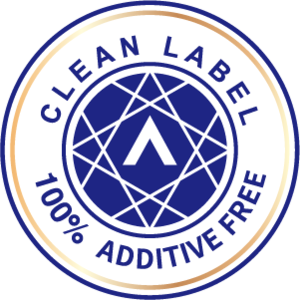
TROIS ÉTOILES
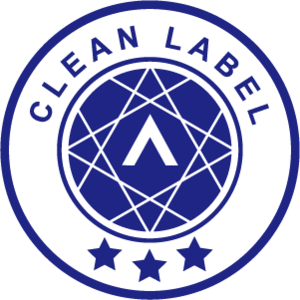
DEUX ÉTOILES
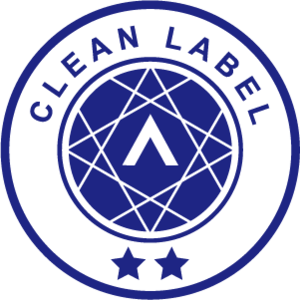
UNE ÉTOILE
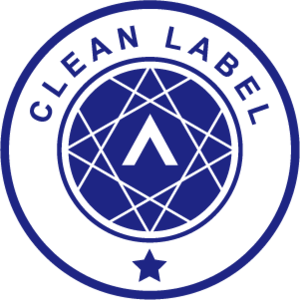
Tutorat
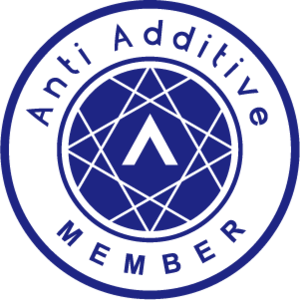
CERTIFICATION FEE | Frais de 100% sans additif € 5,600 / unité | Certification Fee € 3,360 / unité | Frais de tutorat A.A. € 300/ unité |
Certification du sucre
VRAI SUCRE
VRAI SUCRE
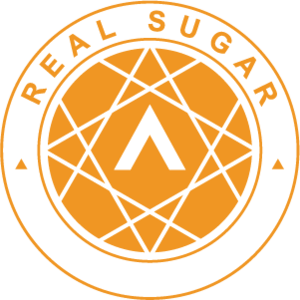
FAIBLE EN SUCRE
FAIBLE EN SUCRE
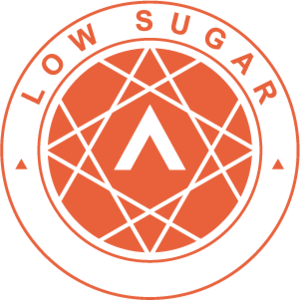
SANS SUCRE
SANS SUCRE
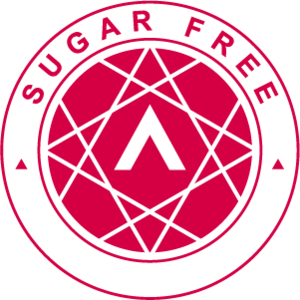
CERTIFICATION FEE | Calculer en fonction du nombre de produits. Frais de vérification d'un seul article € 3,360 / unité |
Anti-additif d’aliments pour animaux
TROIS ÉTOILES
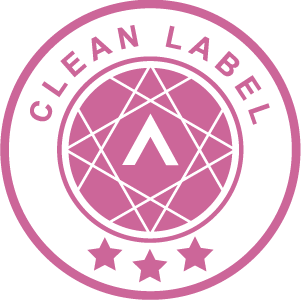
DEUX ÉTOILES
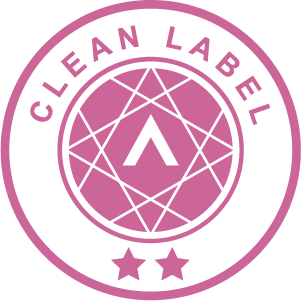
UNE ÉTOILE
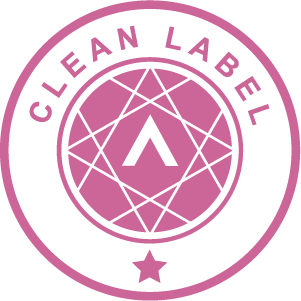
100% sans additif
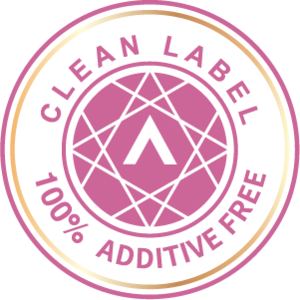
CERTIFICATION FEE | Frais de 100% sans additif € 5,600 / unité | Certification Fee € 3,360 / unité |
Produits de première nécessité
TROIS ÉTOILES
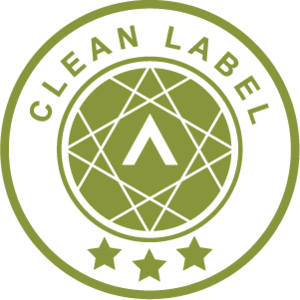
DEUX ÉTOILES
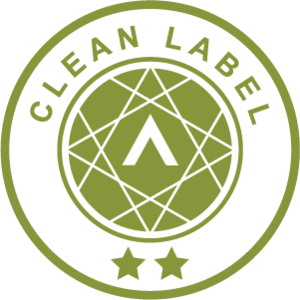
UNE ÉTOILE

COSMETICS
TROIS ÉTOILES
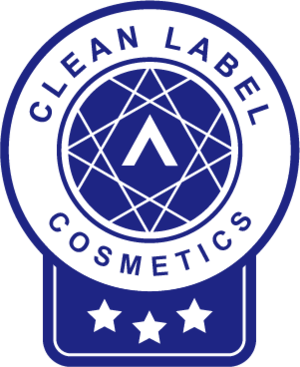
DEUX ÉTOILES
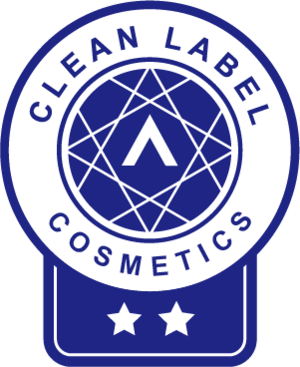
UNE ÉTOILE
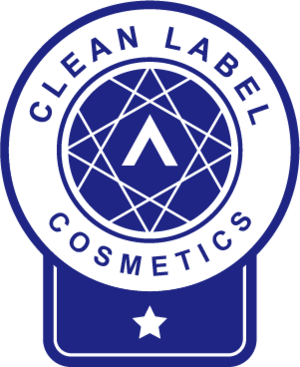
HARMLESS MATERIAL

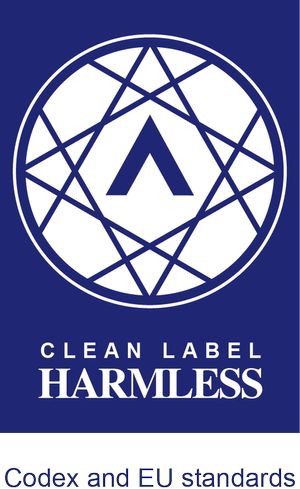
TOTALLY TRUE

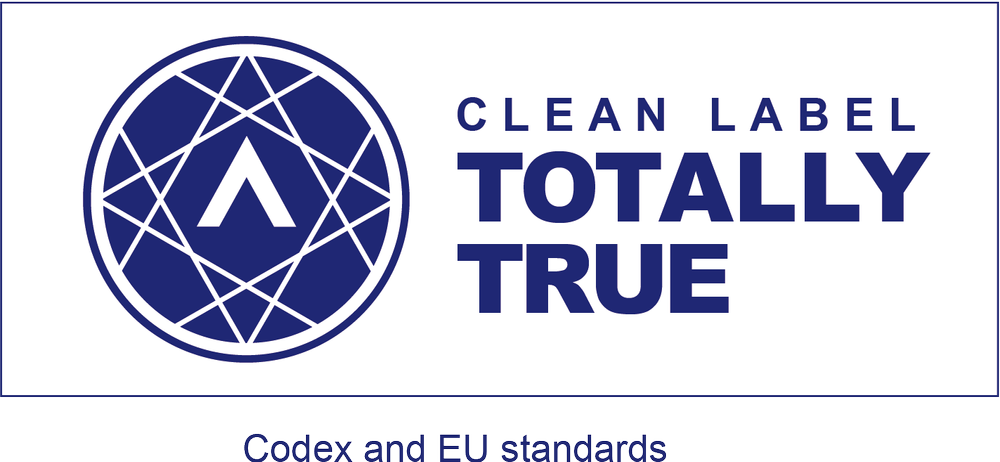
HALAL PLUS
TROIS ÉTOILES
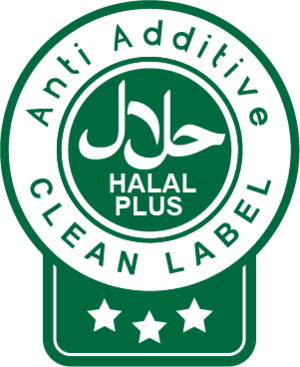
DEUX ÉTOILES
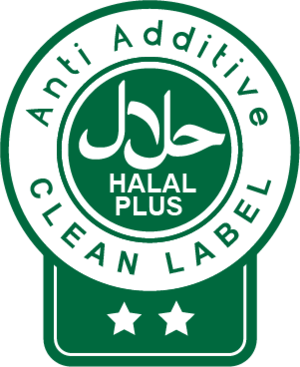
UNE ÉTOILE
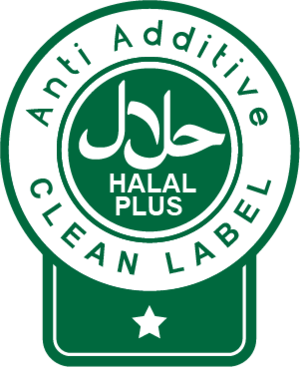
LABEL OF PRODUCT APPLICATION


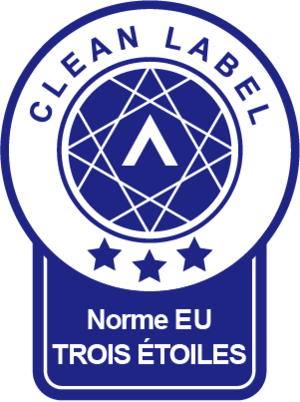
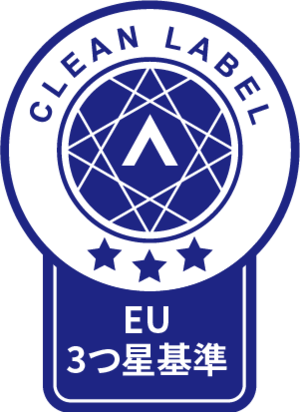
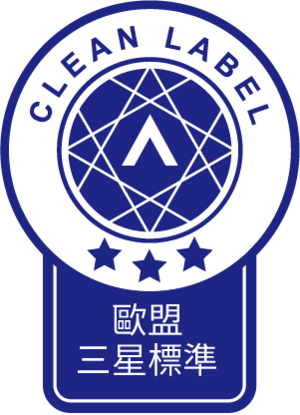
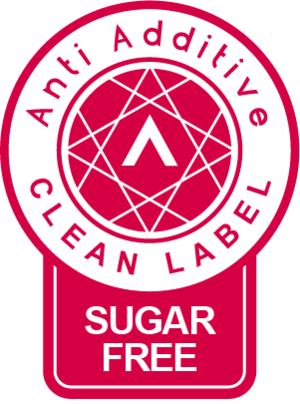
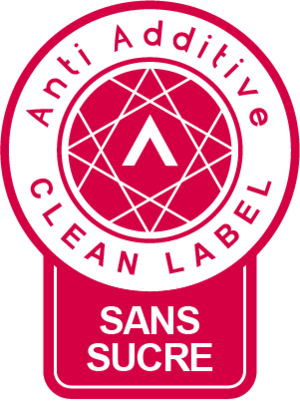
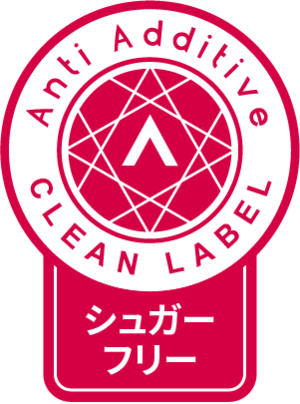

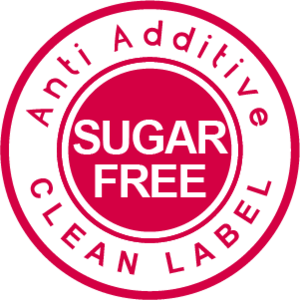
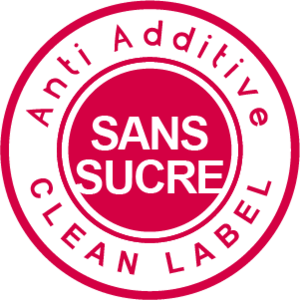
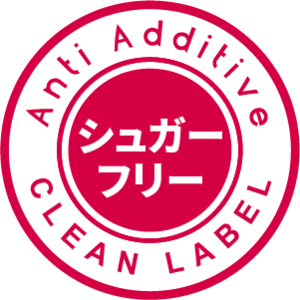
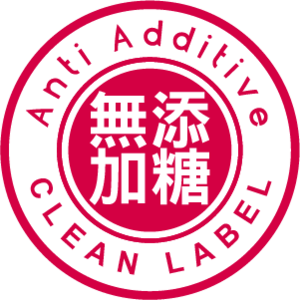

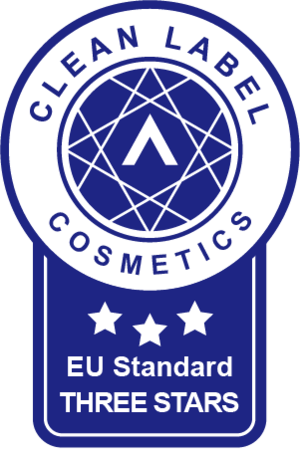
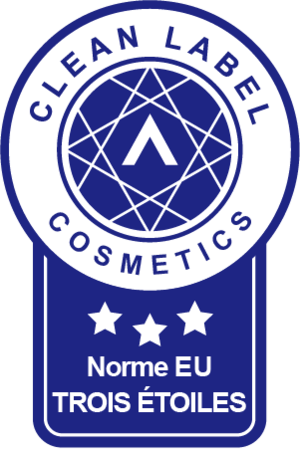
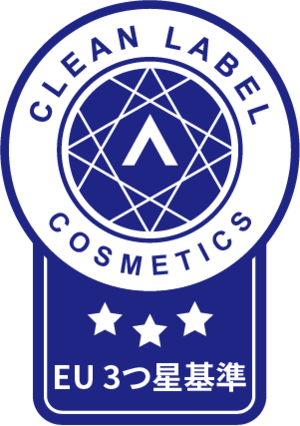
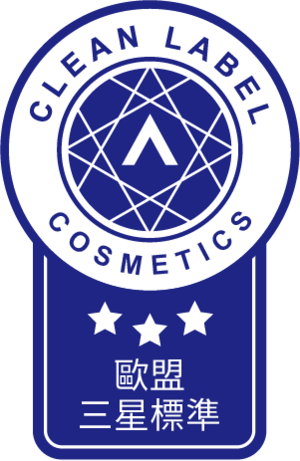
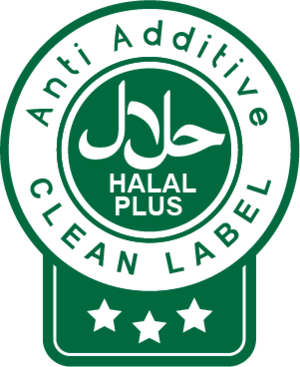
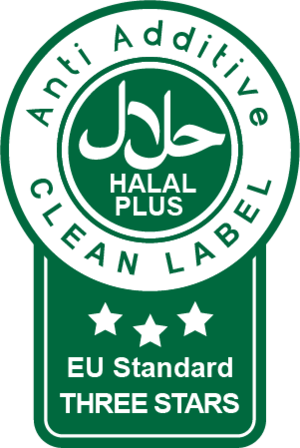
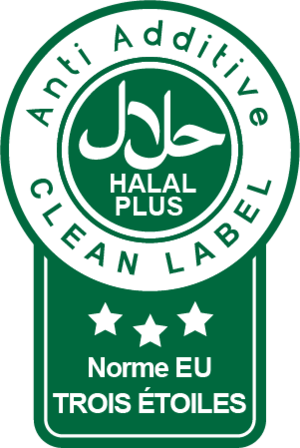
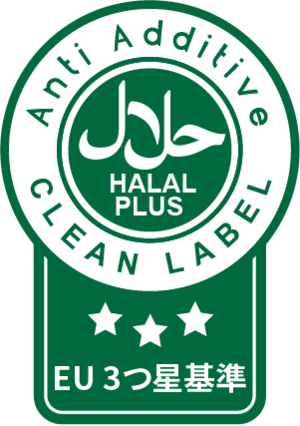
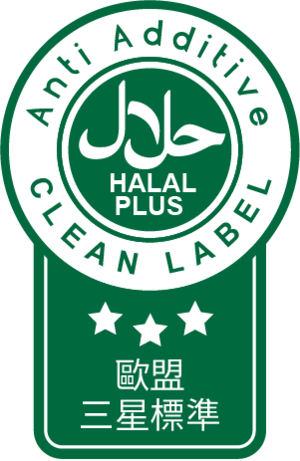
*The above fees are all based on one year. In the event of force majeure, Anti-Additive Clean Label Organization reserves the right to change or extend the time.
Join Tutoring system
Note: Some brands are members who are counseling, and their product ingredients are under revision and have not yet obtained formal certification. As improvement is completed and passed the inspection, it will become a certified product after the A.A. announces it.
Contact Us
Project Insurance Service
A.A. Establish a fair and rigorous verification system to ensure the connotation of the food manufacturing process and coordinated promotion. Hope to bring a stable no-additive diet to consumers.
We also understand that through cross-industry cooperation, we can help companies avoid financial risks, supply risks, management risks, and increasingly severe environmental risks, so as to ensure the sustainable operation of the company through verification and guidance.
All A.A. verification and tutoring companies can enjoy preferential membership status and enjoy professional protection consulting rights under the product insurance of public accident liability insurance, commercial fire insurance, product liability insurance, employer compensation liability, employer liability insurance, and cargo transportation insurance.
Those who are interested, please contact the regional association to help you fill out the form for consultation.
Contact Us
— DROITS ET OBLIGATIONS—
DROITS ET OBLIGATIONS D'A.A.
A.A. doit annoncer sur son site Internet toute modification des procédures, des règlements ou des exigences de vérification.
A.A. doit mettre à jour la liste des exploitants qui ont passé le processus de vérification sur son site web ou faire l'annonce correspondante par d'autres moyens.
A.A. va délivrer la vérification A.A., des autocollants ou une plaque en bois (classement trois étoiles uniquement) aux exploitants qui ont réussi le processus de vérification.
Une fois que le participant a passé la vérification A.A. et obtenu un classement deux étoiles ou une étoile, il doit appliquer un autocollant ou une plaque en bois séparément.
Les exploitants participant au système de vérification peuvent recevoir les bulletins d’information récents relatifs aux dernières réglementations gouvernementales et les exploitants A.A. participant au système de vérification peuvent participer à tout type de séminaires et de cours professionnels organisés par A.A. (Visitez le site officiel A.A. pour plus de détails)
Les exploitants participant au système de vérification sont éligibles pour participer aux Prix du goût A.A.
Les exploitants qui demandent la certification A.A. pourront utiliser le guide VI autorisé par A.A. (uniquement pour les plateformes électroniques) et valable un an.
A.A. fournira une exposition médiatique aux magasins appropriés de temps à autres selon les demandes des médias.
DROITS ET OBLIGATIONS DE L’EXPLOITANT
Les exploitants doivent soumettre les documents réels requis pour la vérification correspondante et coopérer avec A.A. pour fournir les informations pertinentes.
Les exploitants doivent accepter l’audit du dossier de candidature organisé par A.A., ainsi que le suivi et le ré-audit d’A.A. à intervalles réguliers ou irréguliers.
Les exploitants doivent reconnaître le concept anti-additifs et doivent être disposés à supprimer progressivement les additifs.
Les exploitants et A.A. doivent promouvoir conjointement l’esprit anti-additif.
Les exploitants font de leur mieux pour assister aux événements publics organisés par A.A.
Les exploitants doivent recommander aux autres exploitants désireux de s'engager dans la voie du F&B et des produits alimentaires sans additifs de rejoindre A.A.
Pour les restaurants et les produits vérifiés, les exploitants doivent permettre sans frais et autoriser A.A. à divulguer leurs informations sur diverses plateformes, par exemple le contenu promotionnel, les sites web et les applications, comme référence pour les consommateurs lors de leurs choix.
DROIT DE METTRE FIN À LA CERTIFICATION
Si un exploitant qui a passé la vérification est détecté par A.A. comme étant impliqué dans l’une des circonstances suivantes, A.A. révoque le droit de l’exploitant à utiliser ses autocollants, son certificat et sa plaque en bois et exige de l’exploitant qu’il les retourne à A.A. L’exploitant ne peut faire une nouvelle demande de vérification qu’un an après la date de révocation. Si l’exploitant a réussi l’évaluation sur site mais n’a pas encore reçu le certificat et la plaque en bois, A.A. ne lui délivre ni le certificat ni la plaque en bois.
Le certificat de l’exploitant a expiré mais l’opérateur doit encore faire une nouvelle demande de certificat.
L’exploitant cesse définitivement ses activités.
L’exploitant ajoute directement les types d’additifs alimentaires indiqués dans les règlements de certification d'A.A. aux F&B lors de la phase de préparation pendant le processus de demande.
L'exploitant utilise des ingrédients F&B qui ne sont pas approuvés conformément aux réglementations gouvernementales.
Il est confirmé que l’exploitant ne réussit pas l’évaluation.
Les changements apportés par l'exploitant à l'adresse des lieux de restauration ne correspondent pas à l'adresse de ces lieux fournie lors de la demande ou sur le certificat.
L’exploitant est impliqué dans d’autres infractions majeures.
OBLIGATIONS DE CONFIDENTIALITÉ
A.A. maintient la confidentialité des données et informations pertinentes fournies par les exploitants.
A.A. ne doit pas utiliser, divulguer ou reproduire des informations confidentielles, à l'exception des employés, des membres du comité d'évaluation et des consultants professionnels d'A.A. qui sont tenus de connaître ces informations en raison de leur implication dans la fourniture de services de certification.
A.A. ne doit pas utiliser les informations confidentielles à d’autres fins que pour les services de certification. Les informations confidentielles susmentionnées ne comprennent aucune information dans les circonstances suivantes :
Les informations fournies par l’opérateur sont déjà divulguées publiquement à ce moment-là ou sont divulguées publiquement ultérieurement, sans que cela soit dû à une négligence d’A.A.
Les informations sont obtenues par A.A. auprès de tiers sans avoir à remplir une quelconque obligation de confidentialité envers l’exploitant.
Les informations sont détenues par A.A. car elles ont été fournies précédemment par l’exploitant, et cela peut être prouvé par des documents écrits.
Les informations sont développées personnellement par les employés d’A.A. sans faire référence à aucune information confidentielle de quelque façon que ce soit et cela peut être prouvé par des documents écrits.
Les informations sont fournies comme l'exigent les règlements ou les agences gouvernementales.
EU LICENSE OF VERIFICATION CATEGORY SERVICES
ANTI-ADDITIVE CLEAN LABEL ORGANIZATION is approved by the European Union to perform certification services, supervised by EUIPO to carry out inspections that comply with the E number.
The inspection content is as follows: Quatre-épices; Pâte d'amandes; Confiserie à base d'amandes; Poudre à lever; Bicarbonate de soude pour la cuisson; Bicarbonate de soude pour la cuisson; Baozi [petits pains farcis]; Farine d'orge; Mélanges pour okonomiyaki [galettes salées japonaises]; Mélanges pour okonomiyaki [galettes salées japonaises]; Farine de fèves; Biscuits; Biscuits; Pain; Petits pains; Chapelure; Sarrasin transformé; Farine de sarrasin; Boulgour; Brioches; Burritos; Poudre pour gâteaux; Pâte à gâteaux; Pâte à gâteaux; Glaçages pour gâteaux; Gâteaux; Sucre candi; Sucreries pour la décoration de gâteaux; Câpres; Caramels [bonbons]; Sel de céleri; Préparations faites de céréales; Barres de céréales; En-cas à base de céréales; Boissons à base de camomille; Cheeseburgers [sandwichs]; Gommes à mâcher; Gommes à mâcher pour rafraîchir l'haleine; Chicorée [succédané du café]; Flocons de céréales séchées; Chocolat; Chocolat au lait [boisson]; Mousses au chocolat; Décorations au chocolat pour gâteaux; Pâtes à tartiner au chocolat contenant des fruits à coque; Boissons à base de chocolat; Pâtes à tartiner à base de chocolat; Fruits à coque enrobés de chocolat; Chow-chow [condiment]; Chutneys [condiments]; Cannelle [épice]; Clous de girofle; Cacao; Cacao au lait; Boissons à base de cacao;Arômes de café; Arômes de café; Café; Café au lait; Boissons à base de café; Condiments; Confiserie; Confiserie; Sel de cuisine; Flocons de maïs; Flocons de maïs; Farine de maïs; Farine de maïs; Farine de maïs; Farine de maïs; Maïs moulu; Maïs moulu;Maïs grillé; Maïs grillé; Couscous [semoule]; Biscuits salés; Sauce à la canneberge [condiment]; Crème de tartre à usage culinaire; Croûtons; Orge égrugé; Avoine écachée; Curry [épice]; Crème anglaise; Desserts sous forme de mousses [confiserie]; Pâte à cuire; Sauces à salade; Confiture de lait; Essences pour l'alimentation à l'exception des essences éthériques et des huiles essentielles; Ferments pour pâtes; Arômes pour gâteaux, autres qu'huiles essentielles; Arômes pour gâteaux, autres qu'huiles essentielles; Arômes pour boissons, autres qu'huiles essentielles; Arômes pour boissons, autres qu'huiles essentielles; Farine; Farine; Boulettes de pâte à base de farine; Fleurs ou feuilles en tant que succédanés de thé; Fondants [confiserie]; Arômes alimentaires, autres qu'huiles essentielles; Arômes alimentaires, autres qu'huiles essentielles; Plats lyophilisés dont le riz est l'ingrédient principal; Plats lyophilisés dont le riz est l'ingrédient principal; Plats lyophilisés dont le riz est l'ingrédient principal; Plats lyophilisés dont les pâtes alimentaires sont l'ingrédient principal; Plats lyophilisés dont les pâtes alimentaires sont l'ingrédient principal; Plats lyophilisés dont les pâtes alimentaires sont l'ingrédient principal; Pâtes de fruits [confiserie]; Coulis de fruits [sauces]; Herbes potagères conservées [assaisonnements]; Gimbap [plat coréen à base de riz]; Gingembre [condiment]; Pain d'épice; Glucose à usage culinaire; Gluten préparé pour l'alimentation; Additifs de gluten à usage culinaire; Sirop de mélasse; Gruaux pour l'alimentation humaine; Halvas; Préparations de glaçage pour jambons; Barres de céréales hyperprotéinées; Bouillie de farine de maïs à l'eau ou au lait; Semoule de maïs; Miel; Hotdogs; Orge mondé; Avoine mondée; Crèmes glacées; Glace brute, naturelle ou artificielle; Glaces alimentaires; Riz instantané; Jiaozi [boulettes de pâte farcies]; Ketchup [sauce]; Kimchi jeon [galettes de légumes fermentés]; Levain; Graines de lin à usage culinaire [assaisonnements]; Graines de lin à usage culinaire [assaisonnements]; Réglisse [confiserie]; Lomper [galettes à base de pommes de terre]; Pastilles [confiserie]; Pastilles [confiserie]; Macaronis; Macarons [pâtisserie]; Biscuits de malt; Malt pour l'alimentation humaine; Maltose; Marinades; Massepain; Mayonnaises; Pâtés à la viande; Mélasse; Muesli; Farine de moutarde; Moutarde; Édulcorants naturels; Repas préparés à base de nouilles; Nouilles; Nouilles; Farines de fruits à coque; Noix muscade; Flocons d'avoine; Aliments à base d'avoine; Gruau d'avoine; Okonomiyaki [galettes salées japonaises]; Okonomiyaki [galettes salées japonaises]; Onigiri [boulettes de riz]; Sucre de palme; Crêpes [alimentation]; Papier comestible; Pâtes alimentaires; Sauces pour pâtes alimentaires; Pastila [confiserie]; Pâtisserie; Pâte à tarte; Pâtés en croûte; Confiserie à base d'arachides; Pelmeni [boulettes de pâte farcies à la viande]; Poivre; Bonbons à la menthe; Piments [assaisonnements]; Pesto [sauce]; Petits-beurre; Petits fours [pâtisserie]; Piccalilli; Tourtes; Pizzas; Maïs grillé et éclaté [pop corn]; Farine de pommes de terre; Poudres pour la préparation de crèmes glacées; Pralines; Propolis; Propolis; Poudings; Quiches; Quinoa transformé; Ramen [plat japonais à base de nouilles]; Ravioli; Relish [condiment]; Riz; Gâteaux de riz; Riz au lait; Pâte de riz à usage culinaire; Papier de riz comestible; En-cas à base de riz; Gelée royale; Biscottes; Safran [assaisonnement]; Sagou; Sel pour conserver les aliments; Sandwiches; Sauces [condiments]; Assaisonnements; Algues [condiments]; Graines transformées utilisées en tant qu'assaisonnements; Semoule; Senbei [crackers au riz]; Sorbets [glaces alimentaires]; Sorbets [glaces alimentaires]; Nouilles soba; Farine de soja; Sauce piquante de soja; Pâte de fèves de soja [condiment]; Pâte de fèves de soja [condiment]; Spaghetti; Épices; Sucre; Sushi; Bonbons; Taboulé; Tacos; Tapioca; Farine de tapioca; Tartes; Thé; Boissons à base de thé; Sauce tomate; Tortillas; Curcuma; Nouilles udon; Pain azyme; Café vert; Vinaigres; Gaufres; Fleur de farine; Germes de blé pour l'alimentation humaine; Levure; Yaourt glacé [glaces alimentaires]; Yaourt glacé [glaces alimentaires]; Zéfir [confiserie]; Zéfir [confiserie].
AUTRES
A.A. aura le dernier mot sur toute question non spécifiée dans les règlements.
Veuillez indiquer si le demandeur est membre ou membre des organisations énumérées dans la « COUNCIL DECISION (CFSP) 2019/1341 ».







